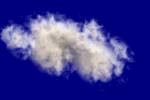The passion of David Sanborn as a player is acknowledged even by god. In the video above, watch Clapton’s face as Sanborn goes way outside and passionate on Hendrix’s Little Wing. It’s not a question of technique, but rather something deeper that is expressed through music. Standing on the stage next to the player, or from a distance through the lens of a video, you recognize that passion when you see it.
On the April 23, 2008 edition of NewsGang, that passion surfaced again. Sanborn picked up the riff and took some long solos on the current state of the American soul. It was blues writ large. Listening to the MP3 a few days later walking the streets of downtown San Francisco, his words blended with some stanzas from Allen Ginsberg’s Howl.
and rose reincarnate in the ghostly clothes of jazz in
the goldhorn shadow of the band and blew the
suffering of America’s naked mind for love into
an eli eli lamma lamma sabacthani saxophone
cry that shivered the cities down to the last radio…
The way the Ginsberg talks about the breath line of the poem relates directly to saxophone and the music of expression:
Ideally each line of Howl is a single breath unit. My breath is long–
that’s the measure, one physical-mental inspiration of thought contained in the elastic of a breath.
The breath line poem was handed down from William Blake, through folk music, through Walt Whitman, all the way to Ginsberg and the saxophone solo. We use it to bring bodily into the world our fear of the dark potentialities of the human soul. But for Whitman and Ginsberg, America’s potential was much greater than the darkness at the edge of town. Sanborn’s solo veers into the darkness and dissonance of our possible futures, but keeps returning to the promise of the American experiment.
We live in interesting times and as Ginsberg once said, “The universe is a new flower. America will be discovered.”
Comments closed
